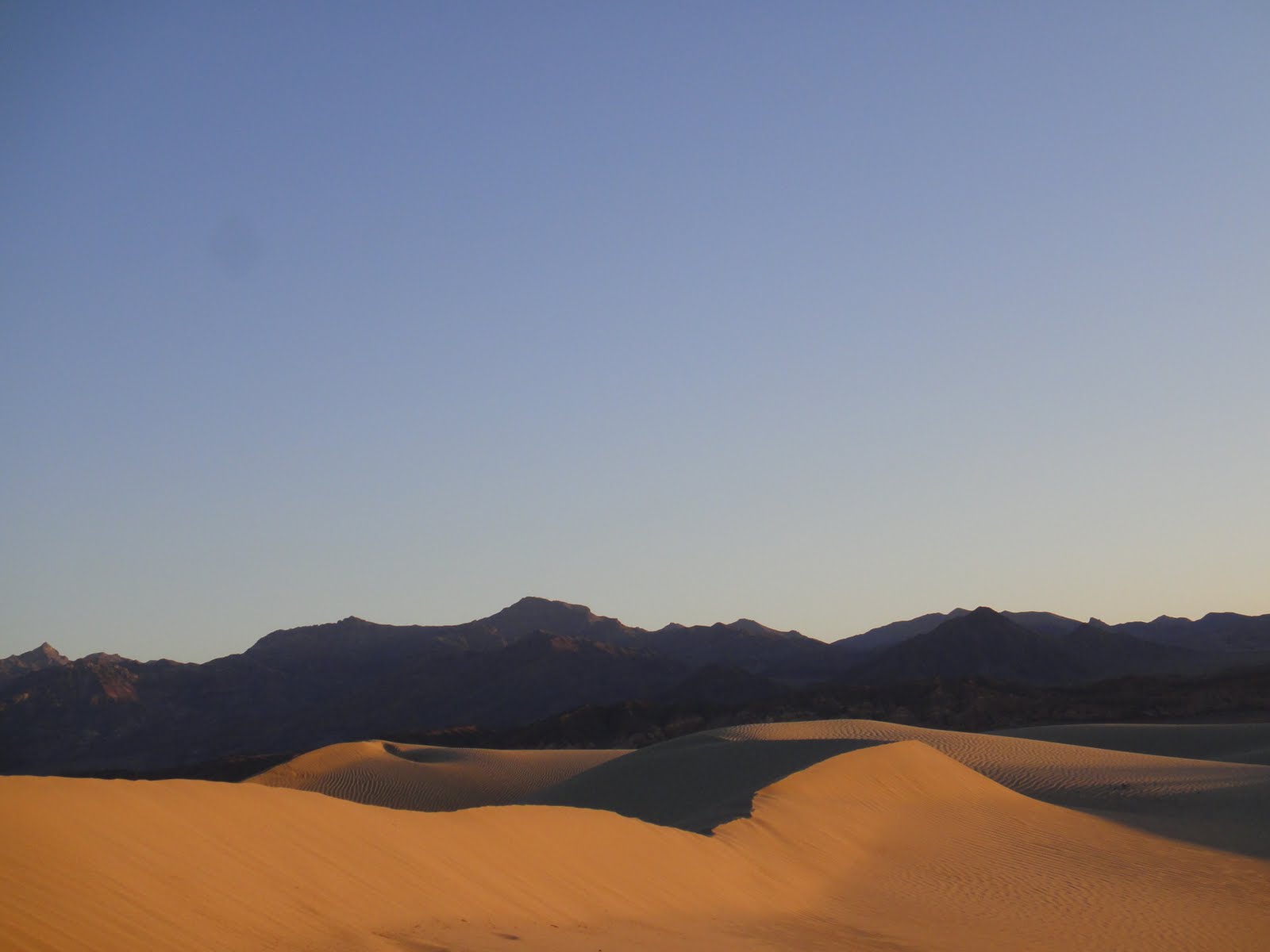Although many people consider Death Valley to be one of the most forbidding places on earth it is truly a remarkable place to visit at any time of year…depending on your taste, and tolerance, for extreme heat!
Death Valley is not for the faint-of-heart as it can be brutally hot in the summer months. But the rewards of visiting this otherworldly landscape far outweigh any pain and suffering that the intense heat can bring to bear.
Should you visit in the spring and the previous winter delivered rain to the valley you will be treated with an impressive floral explosion which usually peaks in late March to early April. Summer brings the heat and is generally the least trafficked time in the park.
Fall arrives in October with temperatures easing off and winter brings the coolest temps of the year making it a great time to visit.
Although many people consider Death Valley to be one of the most forbidding places on earth it is truly a remarkable place to visit at any time of year.
Of the many times that we have spent time in the park over the years we have experienced a wide range of weather with the temperature during one stay reaching 118 degrees! Needles to say that trip was in the summer.
There are many wonderful hikes and sights to take in while in Death Valley. On one trip we chose to visit the Ubehebe Crater. Ubehebe Crater is a wide, 600 foot deep crater that from the rim does not look that daunting to descend into. The bottom is accessed by a fairly easy trail so we decided to take the plunge. Normally we are very well prepared for the desert heat yet on this occasion we found ourselves outmatched, having carried only one small water bottle. While the hike down was easy enough there was little to no shade at the bottom with one lone tree acting as a refuge from the blazing sun.
We soon realized that the hike out of the crater would be a bit more challenging than the hike into it. And challenging it was! Once at the top we raced to the car to drink what water we had left behind. Unfortunately, the water was too hot to drink! We left the crater vowing to return with considerably more water the next time.
If you choose to forego the hike to the bottom of the crater there are two less strenuous hikes you can enjoy…a two mile hike around the rim of the crater and a one mile out-and-back trail that takes you to a smaller adjacent crater.
Normally we are very well prepared for the desert heat yet on this occasion we found ourselves outmatched, having carried only one small water bottle.
Another of our favorite drives/hikes, and one we visit each time we are in the park, is through what is known as the “Artists Drive”. This 9 mile, one way drive, has several turnouts allowing visitors to get out of the car for a closer look at the riot of naturally occurring colors stained into the rock. We generally prefer to park at the small parking lot roughly 5 miles into the drive which provides access to the “Artists Pallet”.
A short hike reveals an eye popping kaleidoscope of reds, yellows, blues, greens and purples. I highly recommend that you take the trail to Artist Pallet as the last 4 miles yield back to the familiar ancient brown and grey rock that you see throughout the park.
No visit to Death Valley would be complete without a trek across the dunes, specifically the Kelso Dune.
Simply driving along the valley floor, no matter the length of your journey, is a breathtaking experience and one you won’t soon forget. At 140 miles long and 5 to 15 miles wide, it is framed on both sides by ancient mountains, some reaching as high as 11,049 feet. It is inescapable how beautiful and raw this place is. It is also hard to imagine that at one time this barren landscape was part of an Ice Age lake along with several other nearby lakes!
In a landscape as vast as this having a car is essential to enjoying the experience and driving from one vista to another makes for great day trips. One such landmark worth getting out of the car to visit is Zabriskie Point near Furnace Creek. The overlook is located at the upper east end of a landscape loaded with impressive canyons and gulches offering an unforgettable and breathtaking panorama of the badlands. From the parking lot it is a short walk up a paved trail to take in this amazing vantage point. The absolute best time to visit is in the early morning when the sun rises over your shoulder and paints the badlands with its rich light.
Simply driving along the valley floor, no matter the length of your journey, is a breathtaking experience and one you won’t soon forget”
